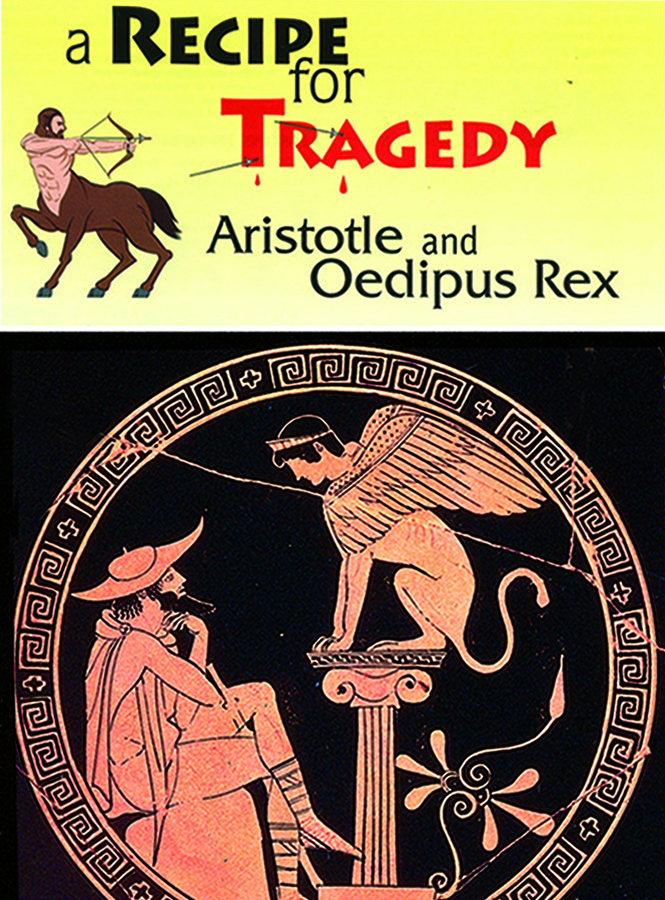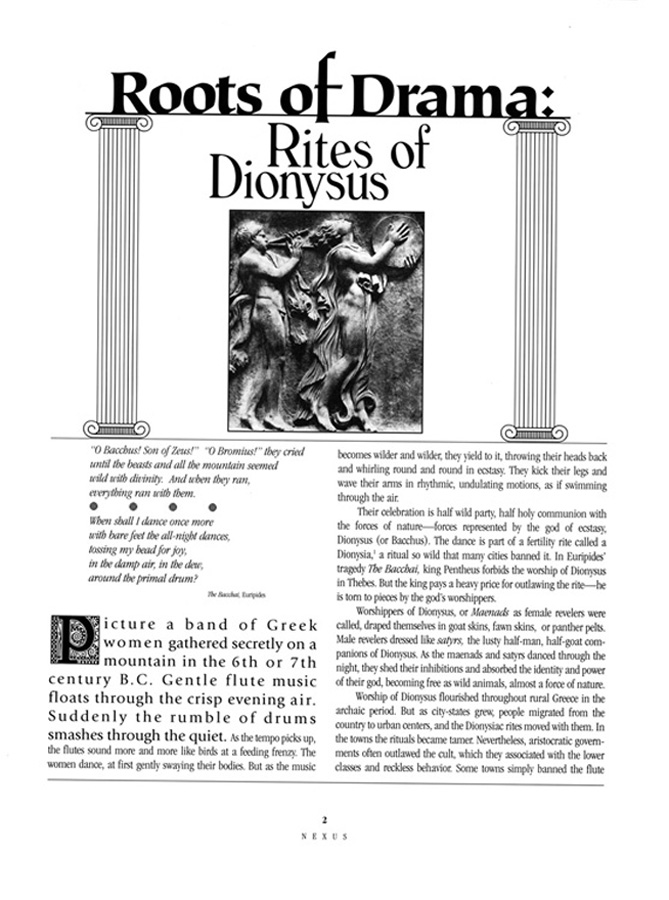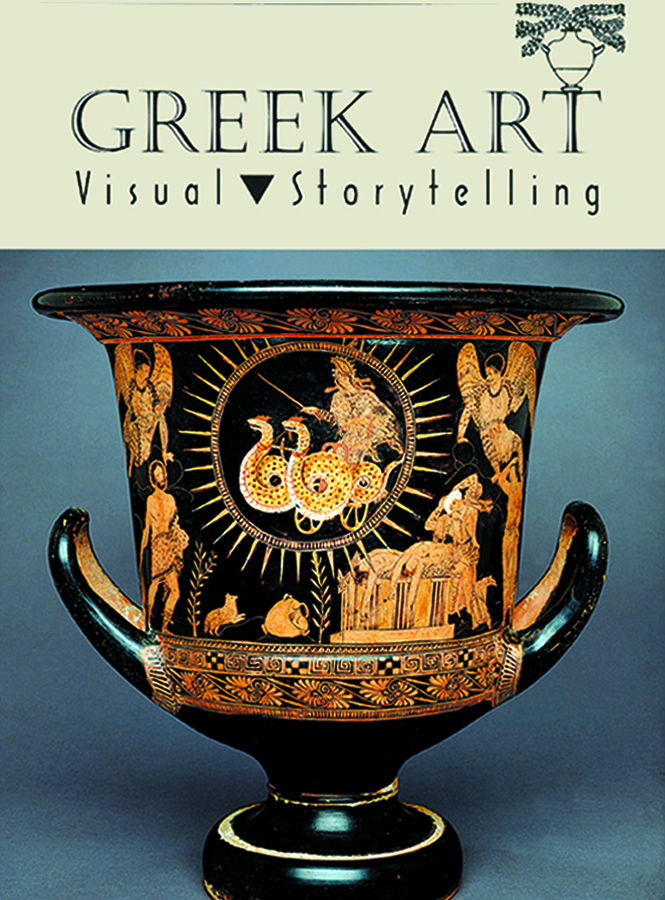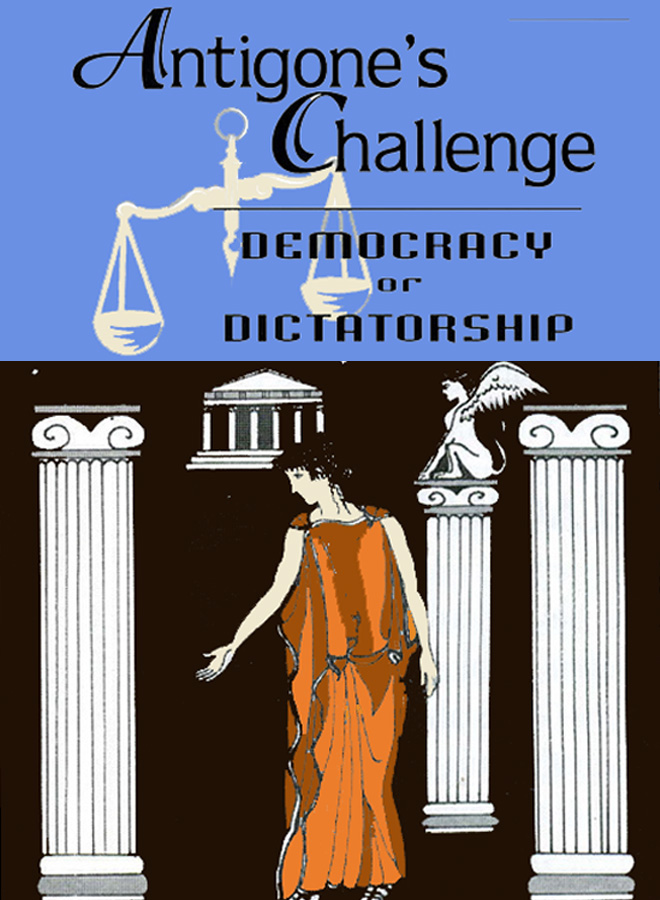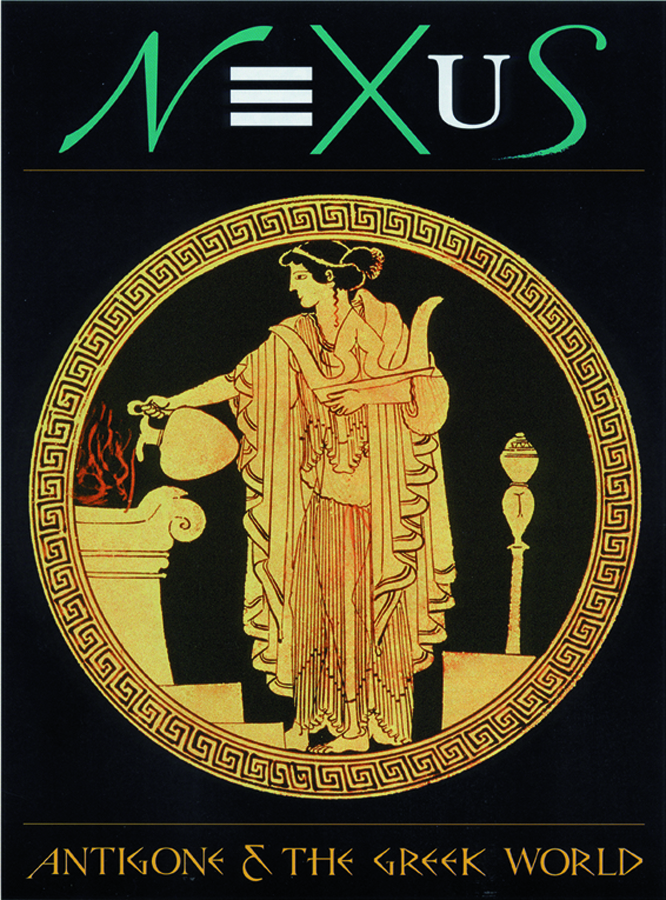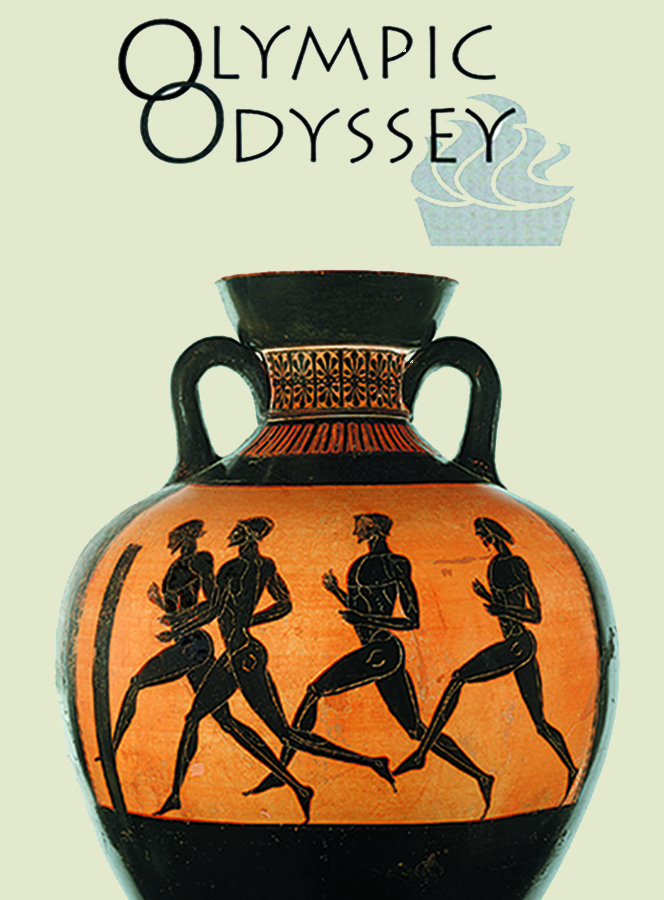Nexus: Antigone and the Greek World
SERVING AMERICAN SECONDARY SCHOOLS FOR 28 YEARS
THE COLLEGE BOARD
“Antigone’s Challenge” uses the play’s language alongside contemporary parallels to situate Antigone’s defiance of authority. Sections detail Sophocles’ use of contrast and introduce the play’s theme, language, plot, and character. A section on maxims provides a lead-in to the “NEXUS four-step method of explication.” Another section explains how plays taught Athenians to debate, reason, and make decisions democratically….All NEXUS volumes emphasize the critical skills and analogical thinking that are crucial for success on the SAT.”
TEMPO, Texas Association for the Gifted & Talented
“With an impressive group of contributors and consultants, Publisher/Editor Jesse Bryant Wilder has put together a stunning set of challenging materials that will provide outstanding learning experiences for secondary students.”
GENE MAEROFF, Founder of the Hechinger Institute on Education and Media, Teachers College, Columbia University
“NEXUS is a remarkable publication, one of the best of its kind for promoting interdisciplinary work by students. Each volume reflects careful research and is filled with information that both engages students and advances their understanding of how the disciplines complement each other.” – Gene Maeroff is the former Senior Fellow at the Carnegie Foundation for the Advancement of Teaching and former New York Times” national education correspondent.
CLASSROOM NOTES PLUS, NCTE (National Council of Teachers of English)
“Each [NEXUS] volume…is a hybrid of a well-written interdisciplinary textbook and a lively, attractive magazine.”
NORTH CAROLINA ASSOCIATION OF INDEPENDENT SCHOOLS NEWSLETTER
“NEXUS is a visually exciting, reader friendly magazine with chapters contributed by nationally known experts in their fields. Crisp scholarship, challenging activities, and teacher supplements make learning entertaining and challenging. NEXUS brings the past to life by using a lively writing style and colorful or intriguing anecdotes, and by highlighting the “story” in history.”
BLOOMFIELD HILLS HIGH SCHOOL, Bloomfield, MI
“It is just an excellent compilation of materials. I think these books are absolute treasures, just remarkable. For a single teacher especially, it pulls everything together. The magazine can take the place of a team of teachers.” – Susan Neun, English Chair
BALDWIN-WOODVILLE HIGH SCHOOL, Baldwin, WI
“Kids who are harder to engage enjoy the visuals and the real-world applications. Overall each volume provides research that any teacher would love to do, but doesn’t have the time to do, and the fact that NEXUS does it for us is very valuable.” – Marti Koller, English teacher
(SEE TEXT SAMPLES BELOW IN GREEN.)
In Antigone and the Greek World students explore the play and the period together, each shedding light on the other. For example, students investigate and answer challenging questions such as: how does Antigone’s behavior reflect the struggle between autocracy and democracy in 5th-century Greece and in similar political tug-of-wars today? How do Antigone’s attitudes and actions differ from traditional women of the period and from contemporary women? What are the similarities and differences between Ancient Greek governments and modern governments?
EVERY PAGE ENGAGES and STIMULATES CRITICAL and CREATIVE THINKING.
Students also explore the birth of democracy and the causes of the Peloponnesian War; they learn how Greek theater evolved and served as an arena in which political ideas competed (Creon’s politics vs. Antigone’s, submissive Ismene vs. strong Antigone, etc.). They read Greek vase art that employs visual metaphor and mirrors Greek drama, transcribe Ancient Greek music, choreograph a scene in the play (see Supplements menu), and emulate Archimedes’ discovery process.
Aligned with Common Core Standards. For secondary students.
CLICK IMAGE TO ENLARGE
Cover Image of Greek Vase Courtesy of Toledo Museum of Art
Antigone Lessons and Lesson Plans Part I – Literature Linked to History and Art
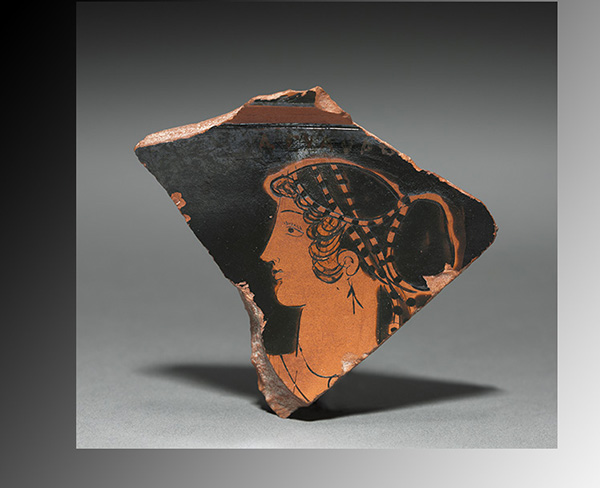
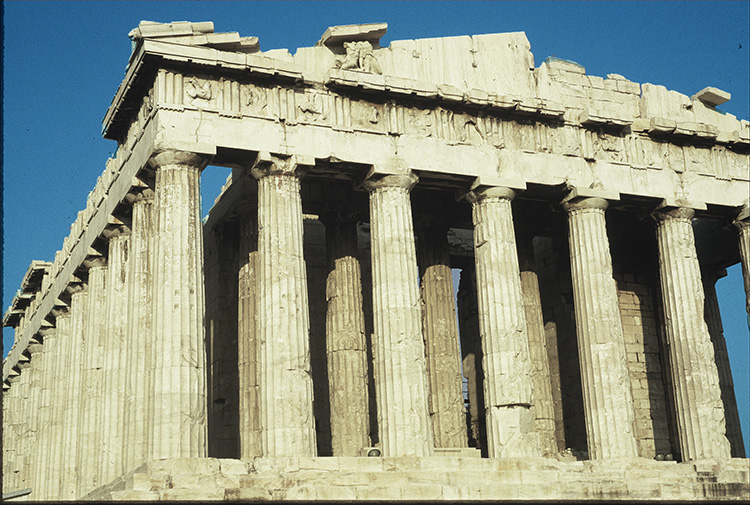
Antigone Lesson on Greek Democracy vs. Dictatorship – 4 Pages
In this volume of NEXUS, students explore Sophocles’ tug-of-war between opposing forces and points of view: individualism vs. authoritarianism, democracy vs. dictatorship, the laws of heaven vs. the laws of the state, youth vs. age, man vs. woman. This chapter investigates these conflicts and Sophocles’ use of contrast in his characterization and language. The lessons in this chapter align with Common Core Standards CCSS.ELA-LITERACY.RL1, RL.2, RL.4, RL.6 9 (for 9-10 and 11-12)
TEXT SAMPLE:
“…COMING SOON…”
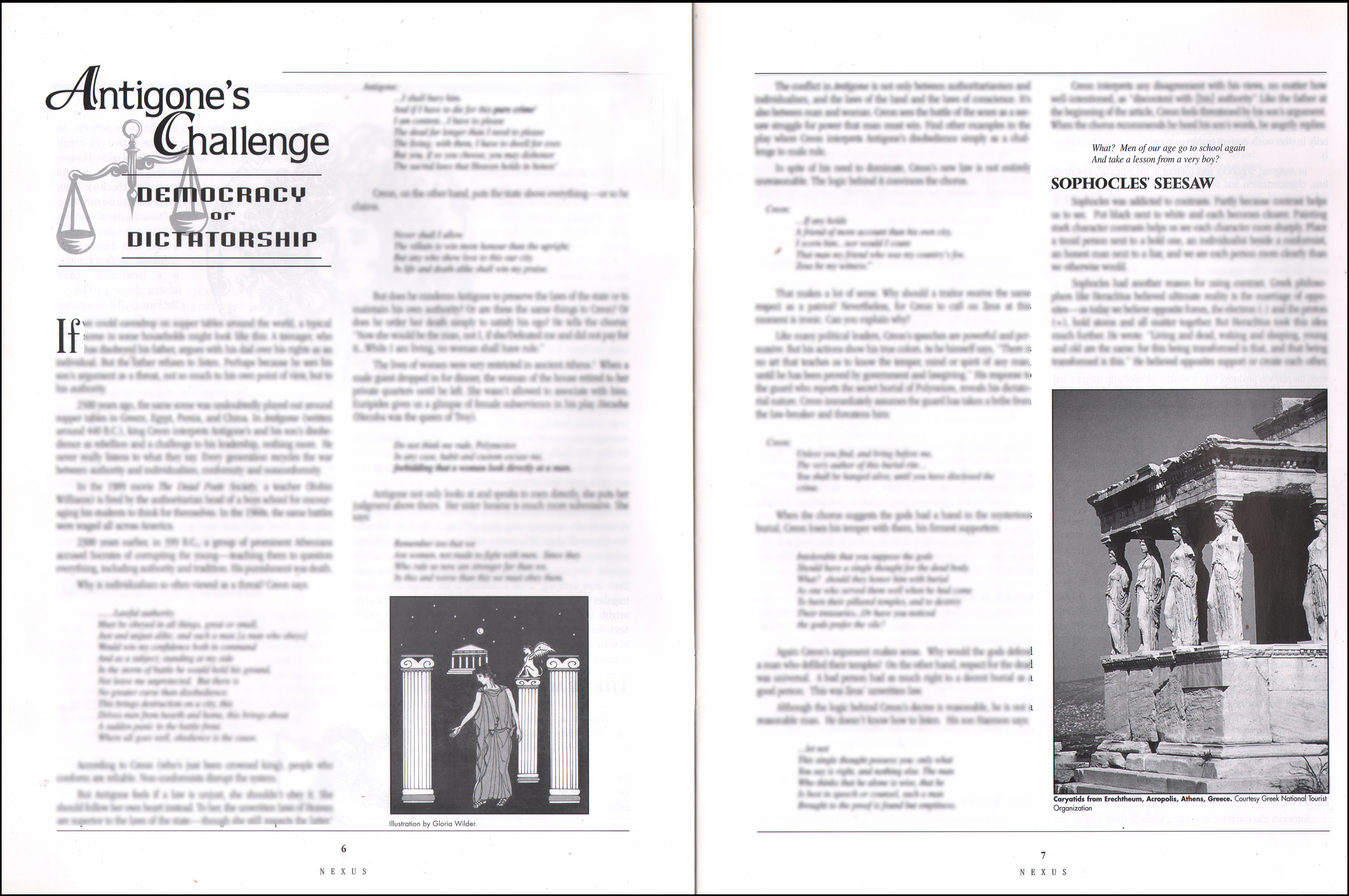
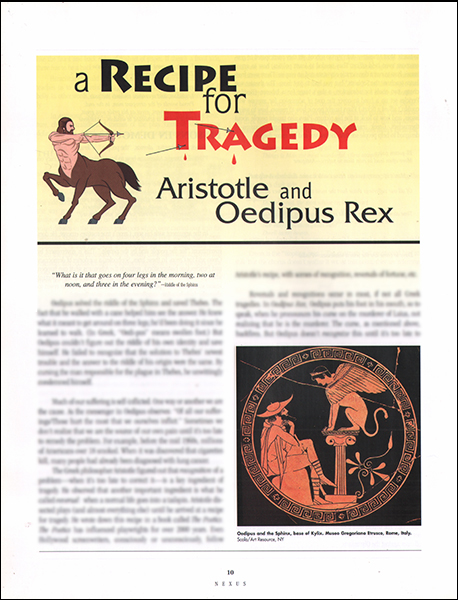
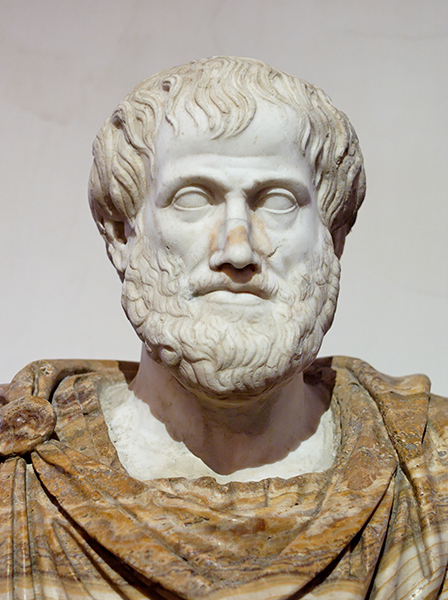
Antigone Lesson on Oedipus Rex and Aristotle’s Rules for Writing Tragedy – 3 Pages.
Students analyze plot structure and characterization in Antigone and Oedipus Rex by applying key, accessible sections of Aristotle’s Poetics to the plays. This lesson aligns with Common Core Standards CCSS.ELA-LITERACY.RL.2; RL.3, and RL.5 (for 9-10 and 11-12)
TEXT SAMPLE:
“Much of our suffering is self-inflicted. One way or another we are the cause. As the messenger in Oedipus observes: ‘Of all our sufferings/Those hurt the most that we ourselves inflict.’ Sometimes we don’t realize that we are the source of our own pain until it’s too late to remedy the problem. For example, before the mid 1960s, millions of Americans over 18 smoked. When it was discovered that cigarettes kill, many people had already been diagnosed with lung cancer.”
“The Greek philosopher Aristotle figured out that recognition of a problem – when it’s too late to correct it – is a key ingredient of tragedy. He observed that another important ingredient is what he called reversal: when a normal life goes into a tailspin. Aristotle dissected plays (and almost everything else) until he arrived at a recipe for tragedy. He wrote down this recipe in a book called The Poetics. The Poetics has influenced playwrights for over 2000 years. Even Hollywood screenwriters, consciously or unconsciously, follow Aristotle’s recipe, with scenes of recognition, reversals of fortune, etc.”
Reversals and recognitions occur in most, if not all Greek tragedies. In Oedipus Rex Oedipus puts his foot in his mouth, so to speak , when he pronounces his curse on the murderer of Laius, not realizing that he is the murderer. The curse, as mentioned above, backfires. But Oedipus doesn’t recognize this until it’s too late to mend the situation. To intensify Oedipus’ suffering in the play, Sophocles makes the recognition and the reversal occur at the same moment…”
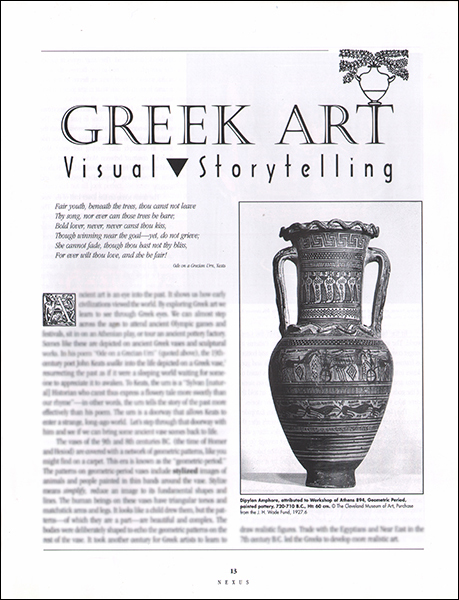
Lesson on Visual Storytelling & Visual Figurative Language on Ancient Greek Vases – 5 Pages
Students learn to read Greek art that mirrors Greek drama and uses visual metaphors, symbols and contrasts. This lesson satisfies Common Core Standards CCSS.ELA-LITERACY.CCRA.R.7 (Integrate and evaluate content presented in diverse media and formats, including visually and quantitatively, as well as in words) and CCSS.ELA-LITERACY.RL.9-10.7 (Analyze the representation of a subject or a key scene in two different artistic mediums, including what is emphasized or absent in each treatment).
TEXT SAMPLE:
“Ancient art is an eye into the past. It shows us how early civilizations viewed the world. By exploring Greek art we learn to see through Greek eyes. We can almost step across the ages to attend ancient Olympic games and festivals, sit in on an Athenian play, or tour an ancient pottery factory. Scenes like these are depicted on ancient Greek vases and sculptural works. In his poem ‘Ode on a Grecian Urn’ (quoted above), the 19th-century poet John Keats walks into the life depicted on a Greek vase, resurrecting the past as if it were a sleeping world waiting for someone to appreciate it to awaken…”
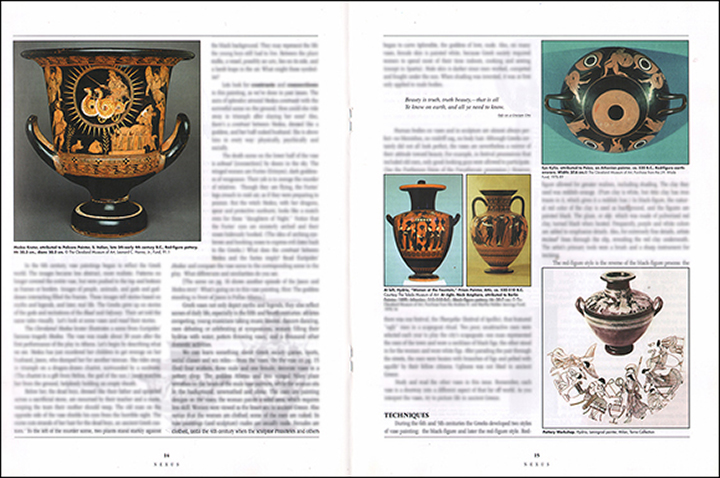
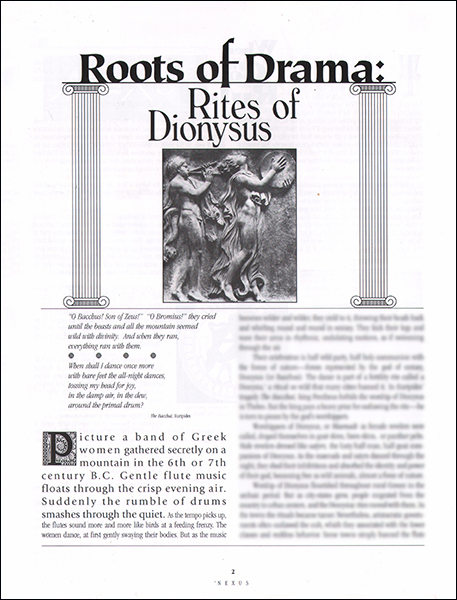
Antigone Lesson on the Birth of Greek Theater – 4 Pages
In this lesson tudents investigate the evolution of drama from Dionysian rituals to the trilogies of Aeschylus, Sophocles and Euripides. All NEXUS chapter-lessons are embroidered with colorful period anecdotes and resonant links to students’ interests. We believe that if students’ emotions are not engaged in the learning process, they will distract them from it. NEXUS motivates students to make an emotional investment in their own education. This chapter is aligned with Common Core Standards CCSS.ELA-LITERACY.RL.1 and RL.2 (for 9-10 and 11-12).
(Image of the Theater of Epidauros and Dionysus and Satyrs)
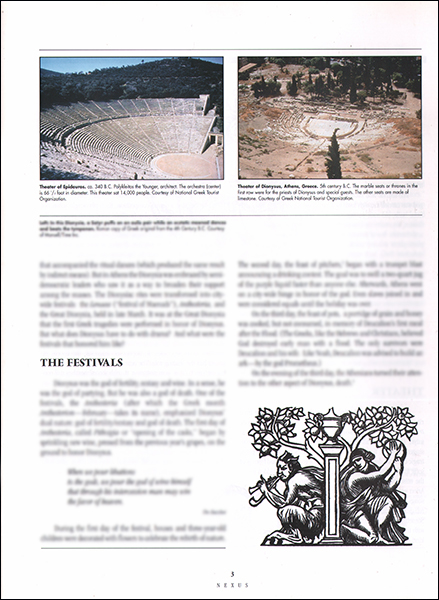
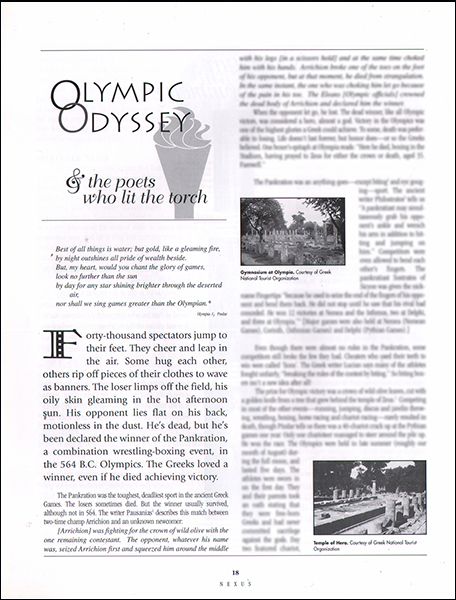
Antigone Lesson on the Ancient Greek Olympics and the Poets Who Celebrated the Athletes– 3 Pages
Olympic Odyssey and the Poets Who Lit the Torch
Do some of your athletes thumb their noses at poetry? In this NEXUS lesson students meet the sports writers of the ancient Olympic games – poets – and interpret some of their challenging, OLYMPIAN LYRICS. The content satisfies Common Core Standard CCSS.ELA-LITERACY.RL.9-10.4

Antigone Lessons and Lesson Plans Part II – History, Legend, and Mythology
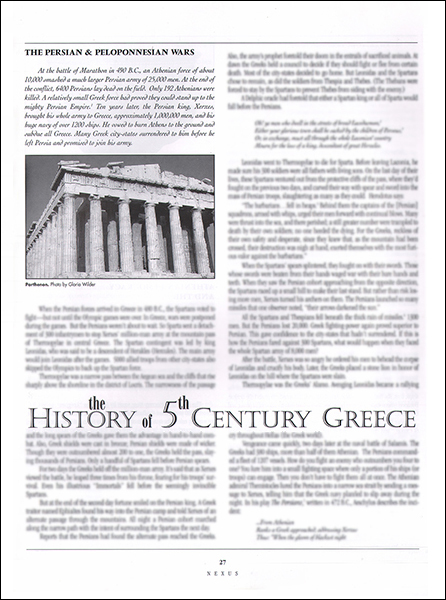
Antigone Lesson on the Persian and Peloponnesian Wars and the Birth of Democracy – 3 Pages
This chapter brings history to life with a dramatic narrative of the battle at Thermopylae in which 300 Spartans held off the million-man army of Xerxes for two days. Our account, with compelling excerpts from Herodotus’ History, reads like a war novel. Then we explore the rise of Athens (comparing the Delian League to NATO), the birth of Democracy (from Solon to Pericles , with comparisons to our times), and the beginning of the Peloponnesian War. The two-part NEXUS supplement “Athens’ Hubris, the War’s Turning Point” further explores the Peloponnesian War. This captivating lesson meets the following Common Core Standards : CCSS.ELA-LITERACY.RH.9-10.1, CCSS.ELA-LITERACY.RH.9-10.3, CCSS.ELA-LITERACY.RH.9-10.4, CCSS.ELA-LITERACY.RH.9-10.8, CCSS.ELA-LITERACY.RH.9-10.9
TEXT SAMPLE:
“As Athens’ power grew, her neighbors, particularly Corinth and Sparta, became jealous and fearful of her. This led to rivalry and a brief war ending in 446. The full-scale Peloponnesian War between the Delian League (Athens and her allies) and the Peloponnesian League (Sparta and her allies) erupted fifteen years later in 431. The war started in a typical way – with name calling. The Corinthians (who had grievances against Athens) said Athens wanted to enslave all Greece. A Corinthian ambassador told the Peloponnesian Congress: ‘We must believe that the tyrant city…has been established against all alike, with a program of universal empire.’ Pericles accused Sparta of the same thing. Labeling one’s enemy as an arch-villain or ‘evil empire’ is an often used political tactic. Basically its says you’re the good guy and your enemy is the bad guy. During the Cold War, Russian and the U.S. did the same thing, each labeling the other an evil empire.
The first stage of the Peloponnesian War was like a fight between a great boxer (Sparta) and a champion wrestler (Athens). The boxer would only box; the wrestler would only wrestle – that is, Sparta, with its mighty army, would only fight on land, and Athens, with its awesome navy, would only fight at sea, more or less. Pericles said, ‘If they march against our country, we will sail against theirs.’ Each refused to fight on the other’s terms. This led to stalemate. Nevertheless, Pericles told the Athenians…”
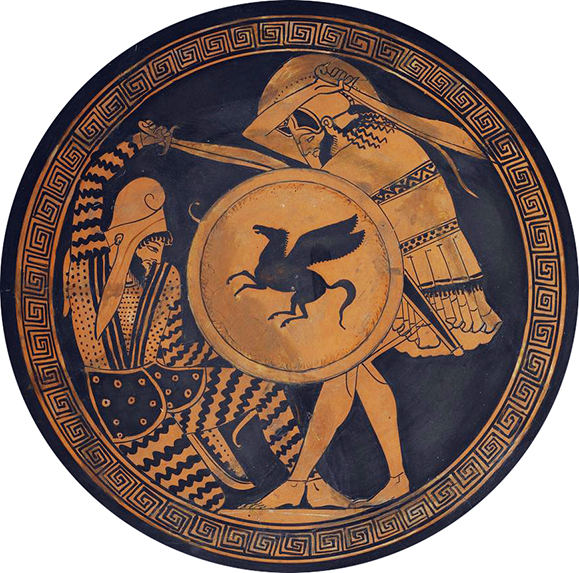
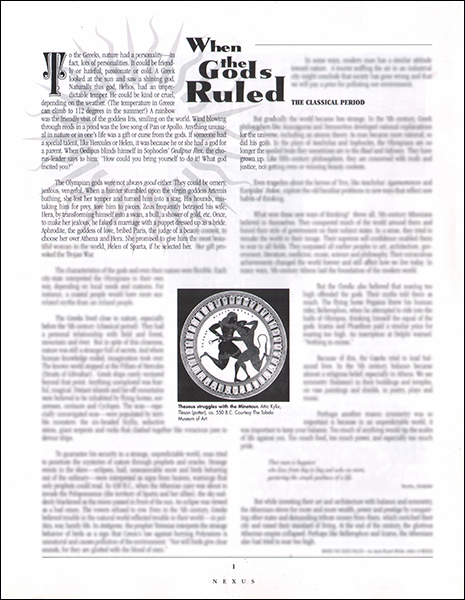
Antigone Lesson on the Evolution of the Greek Gods – 1 Page
Students investigate the evolution of the Greek gods, from Homer’s pantheon to Sophocles’. As the Greeks matured, so did their view of their gods. In this overview lesson students also learn why oracles, prophets and bird signs were so much a part of the Greek world and their plays.
TEXT SAMPLE:
“To the Greeks, nature had a personality – in fact, lots of personalities. It could be friendly or hateful, passionate or cold. A Greek looked at the sun and saw a shining god. Naturally this god, Helios, had an unpredictable temper. He could be kind or cruel, depending on the weather. (The temperature in Greece can climb to 112 degrees in the summer!) A rainbow was the friendly visit of the goddess Iris, smiling on the world. Wind blowing through reeds in a pond was the love song of Pan or Apollo. Anything unusual in nature or in one’s life was a gift or curse from the gods. If someone had a special talent, like Hercules or Helen, it was because he or she had a god for a parent. When Oedipus blinds himself in Sophocles’ Oedipus Rex, the chorus-leader says to him: ‘How could you bring yourself to do it! What god incited you?'”
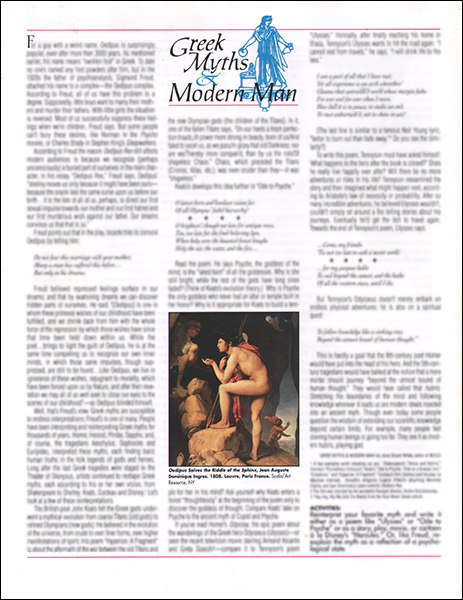
Greek Mythology & Modern Man – 1 Page
Modern takes on Greek myths from Freud, Lord Tennyson (his poem Ulysses), and Keats (Ode to Psyche). This lesson is aligned with Common Core Standards CCSS.ELA-LITERACY.RL.1, RL.6, and RL.7 (for 9-10 and 11-12) and CCSS.ELA-LITERACY.RH.1, .RH.6, RH.9 (9-10; 11-12).
TEXT SAMPLE:
“Long after the last Greek tragedies were staged in the Theater of Dionysus, artists continued to reshape Greek myths, each according to his or her own vision, from Shakespeare to Shelley, Keats, Tennyson, Cocteau and Disney….If you’ve read Homer’s Odyssey, the epic poem about the wanderings of the Greek Hero Odysseus (Ulysses)…compare it to Tennyson’s poem “Ulysses.” Ironically, after finally reaching his home in Ithaca, Tennyson’s Ulysses wants to hit the road again. “I cannot rest from travels,” he says. “I will drink life to the lees”….To write his poem, Tennyson must have asked himself: ‘What happens to the hero after the book is closed.’ Does he really live happily ever after? Will there be no more adventures or risks in his life?…After so many incredible adventures, Tennyson believed Ulysses couldn’t simply sit around a fire telling stories about his journeys. Eventually he’d get the itch to travel again….”
Antigone Lessons and Lesson Plans Part III – Greco Music and Science
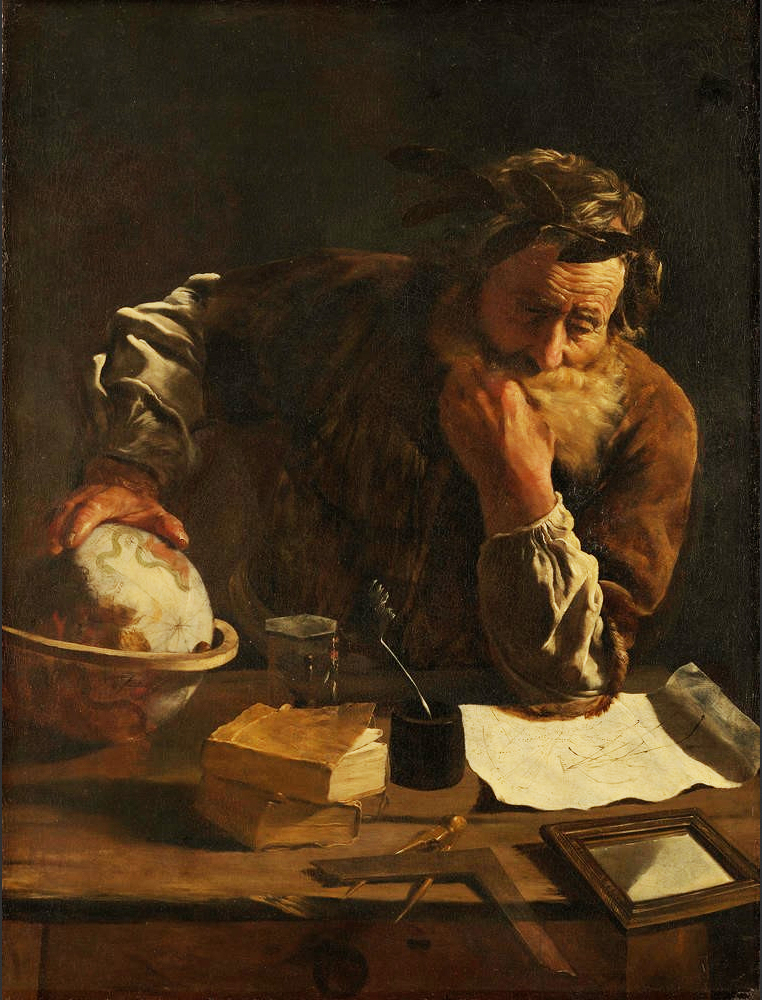
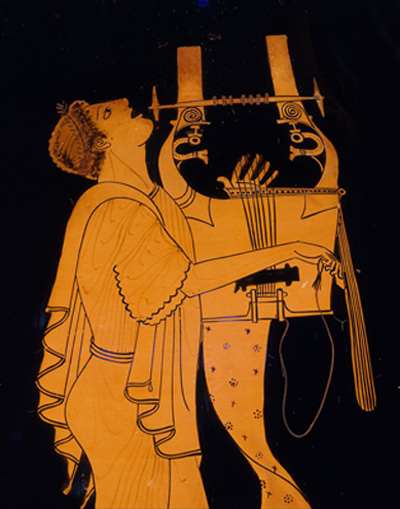
Archimedes – the Wizard of Syracuse: Antigone Science Lesson – 3 Pages
PLUS “Pi in the Eye” – Students Rediscover Pi from Scratch in Our Antigone Math Lesson
In these interdisciplinary Antigone lessons students retrace the steps of Archimedes’discovery process, including how he discovered pi. Aligned with Common Core Standards CCSS.ELA-LITERACY.RST.2, RST.3, RST.4, RST.8, RST.9 [for 9-10 and 11-12] and with the Common Core goal of exercising literacy across the curriculum.
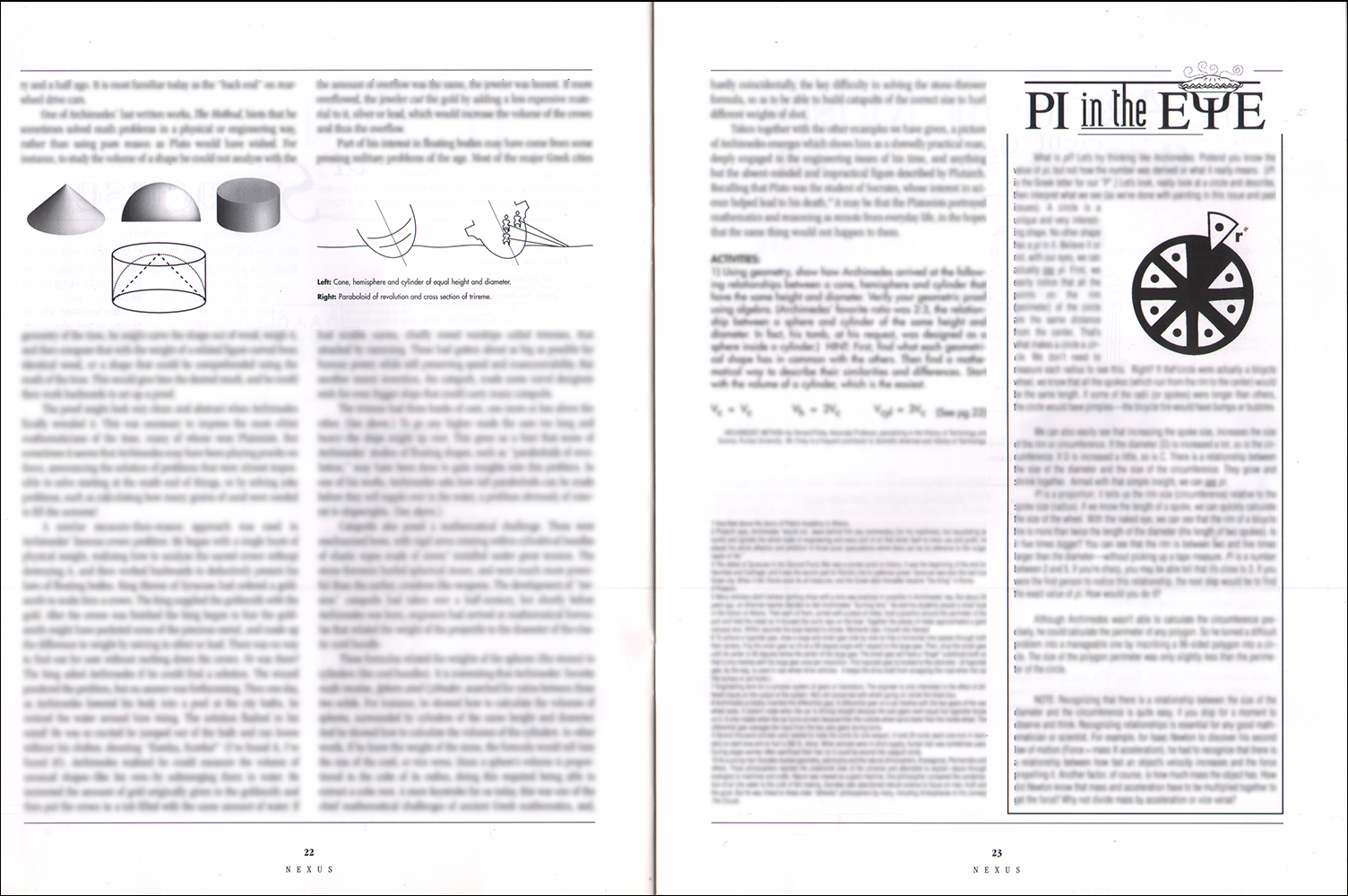
The Art of the Muses, Ancient Greek Music Lesson – 3 Pages
In this interdisciplinary Antigone lesson students transcribe ancient Greek music into modern notation, and learn the role of music and rhythm in Greek drama, as well as the role of Greek instruments in poetry, plays, and athletic events.

Lesson Plan for Constructing a Pan Pipe
Antigone Supplements with Lesson Plans
NEXUS SUPPLEMENTS can be accessed under the SUPPLEMENTS menu. NOTE: NEXUS supplements, lesson plans, and booklets are protected by U.S. Copyright and cannot be photocopied, photographed, or downloaded.
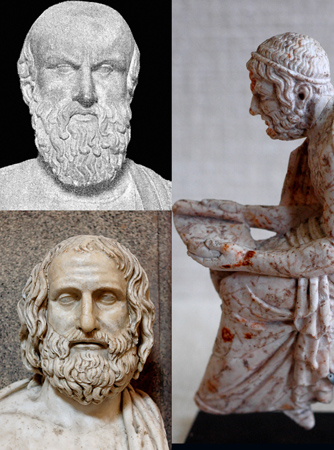
Antigone Supplement and Lesson 1 - The Three Kings of Tragedy
This supplementary interdisciplinary Antigone lesson investigates the different styles and preoccupations of Athens’ three greatest tragedians, Aeschylus, Sophocles, and Euripides. Each playwright viewed man’s relationship with the gods and state differently. Providing students with a brief but global perspective of the evolution of Greek drama enables them to fully grasp Antigone’s place in Greek theater. This supplement is aligned with Common Core Standard CCSS.ELA-LITERACY.RL.6 (for 9-10 and 11-12).
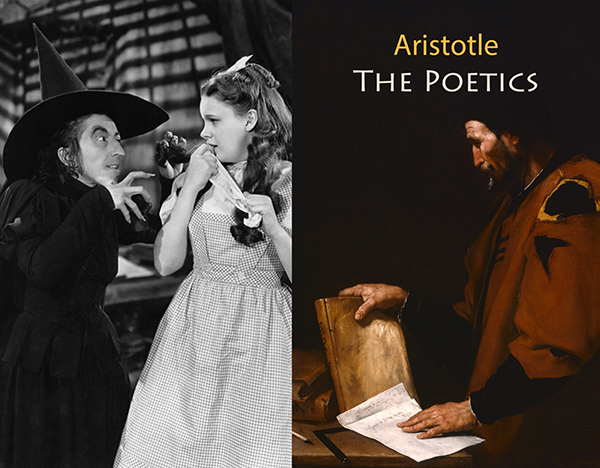
Antigone Supplement and Lesson 2 - Aristotle Meets The Wizard of Oz - Writing Your Own Drama
Students learn to apply key rules of Aristotle’s Poetics, such as the Law of Necessity, to their skits, plays, and short stories by using a very familiar and easy-to-understand model of dramatic structure and characterization, The Wizard of Oz. The external and internal obstacles that obstruct Dorothy and Antigone serve as models for students’ own dramatic works. This creative writing exercise with its straightforward and fun analytic components is aligned with Common Core Standards CCSS.ELA-LITERACY.RL.2, RL.3 and RL.5 (for 9-10 and 11-12).
Antigone Supplement and Lesson 3 - Athens’ Hubris: The Turning Point of the War
This interdisciplinary Antigone supplement expands upon the chapter “The History of 5th-century Greece” in Antigone and the Greek World. In Ancient Greece soaring too high – hubris – was viewed as the prelude to an Icarus-like fall. Athens’ aggression against its reluctant ally Melos and its subsequent unprovoked invasion of Sicily may have been driven, in part, by hubris. Students consider the various points of view of 5th-century Athenian leaders as they debate whether to invade Sicily or not. This interdisciplinary Antigone lesson satisfies Common Core History Standards CCSS.ELA-LITERACY.RH.2, RH.3 and RH.9 (for 9-10 and 11-12).
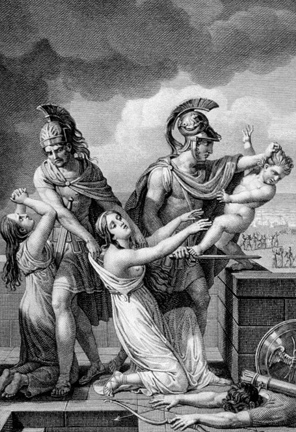
Antigone Supplement and Lesson 4 - Euripides' Anti-War Tragedy, The Trojan Women
Euripides wrote his great anti-war play as a censure for the unprovoked Athenian attack on Melos (they massacred all the males and enslaved the women, much like what the Greeks did at Troy) and a warning not to attack Sicily. Without being required to read the play, students explore key passages of The Trojan Women and compare them to quotations from Edith Hamilton’s preface to her translation of the tragedy. This supplementary Antigone and the Greek World lesson builds upon “Athens’ Hubris: The War's Turning Point” and meets Common Core Standards CCSS.ELA-LITERACY.RL.1, RL.2, RL.3, RL.4, and RL.5 (for 9-10 and 11-12).
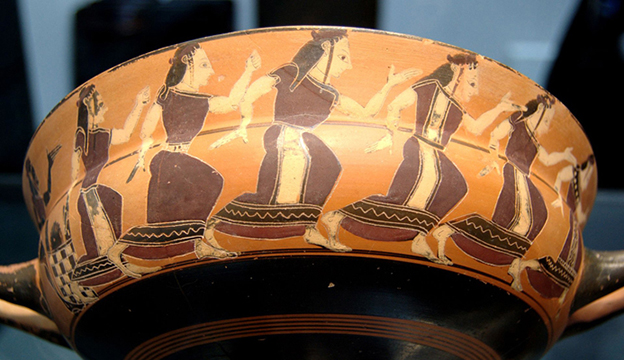
Antigone Supplement and Lesson 5 - Dramatic Dance in Greek Tragedy
Students learn the role of choral dance in Greek drama and choreograph a dance for the “Ode on Man” in Antigone by balancing a sequence of mimetic gestures as we sometimes see on Greek vases. Choreographic choices are partly determined by the symmetry and contrast in strophe and antistrophe. This supplementary Antigone and the Greek World lesson is aligned with five COMMON CORE STANDARDS: CCSS.ELA-LITERACY.RL.1, RL.2, RL.4, RL.5. and RL.7 (for 9-10 and 11-12).
Antigone Supplement and Lesson 6 - John Keats’ Greeks Odes PART I: Ode on a Grecian Urn Lesson
In this engaging, interdisciplinary Antigone and the Greek World lesson students use three resources (including a rock song) to help them not only grasp but appreciate what many argue is Keats’ greatest ode. The NEXUS exploration of Ode on a Grecian Urn reinforces what students learn about reading and interpreting the visual narrative and visual metaphors, contrasts, and symbols on Greek vases in “Greek Art: Visual Storytelling”in the Antigone and the Greek World volume. This Antigone supplement satisfies Common Core Standards CCSS.ELA-LITERACY.RL.2, RL.4, RL.5, and RL.7 (for 9-10 and 11-12).
This interdisciplinary Antigone lesson delves into Ode to Psyche by first exploring Keats’ belief in an evolution of refinement and self-awareness modeled on the progression of Greek gods from Chaos to crude Titans to refined Olympians and finally to Psyche, the goddess of the mind. This supplement expands upon sections of the chapter “Greek Myths and Modern Man” in Antigone and the Greek World and satisfies Common Core Standards CCSS.ELA-LITERACY.RL.1, RL.2, RL.4, and RL.5 (for 9-10 and 11-12).
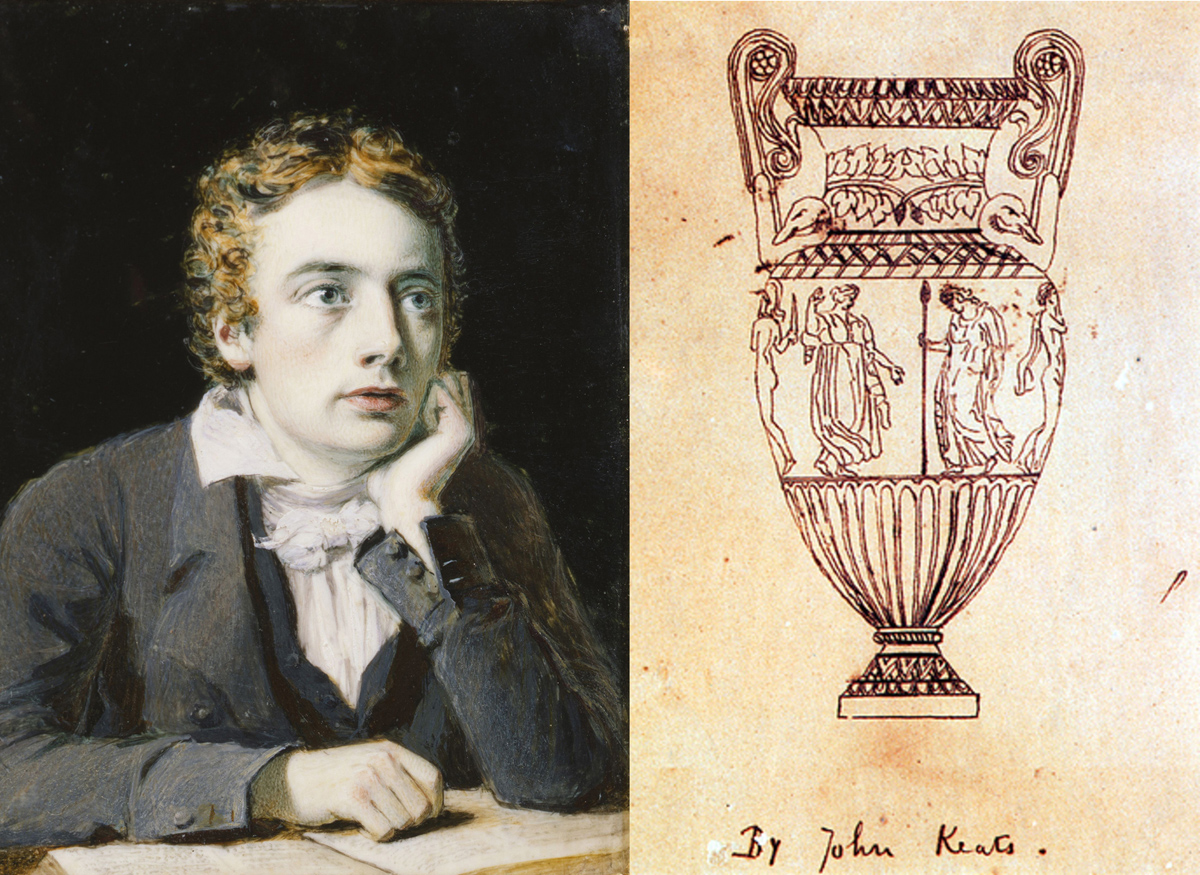
GUIDELINES: The NEXUS guidelines suggest interdisciplinary activities and student-friendly ancillary readings. They also offer teachers guidance in many key areas; for ex., we tell you exactly where to find Pericles’ three great speeches in Thucydides’ voluminous History.
NEXUS is a 501(c)(3) nonprofit based in Cleveland, OH. Our mission is to provide schools with outstanding interdisciplinary resources that inspire students to THINK, LINK and IMAGINE
A portion of our proceeds is donated annually to UNICEF'S Audrey Hepburn All Children in School Fund.


